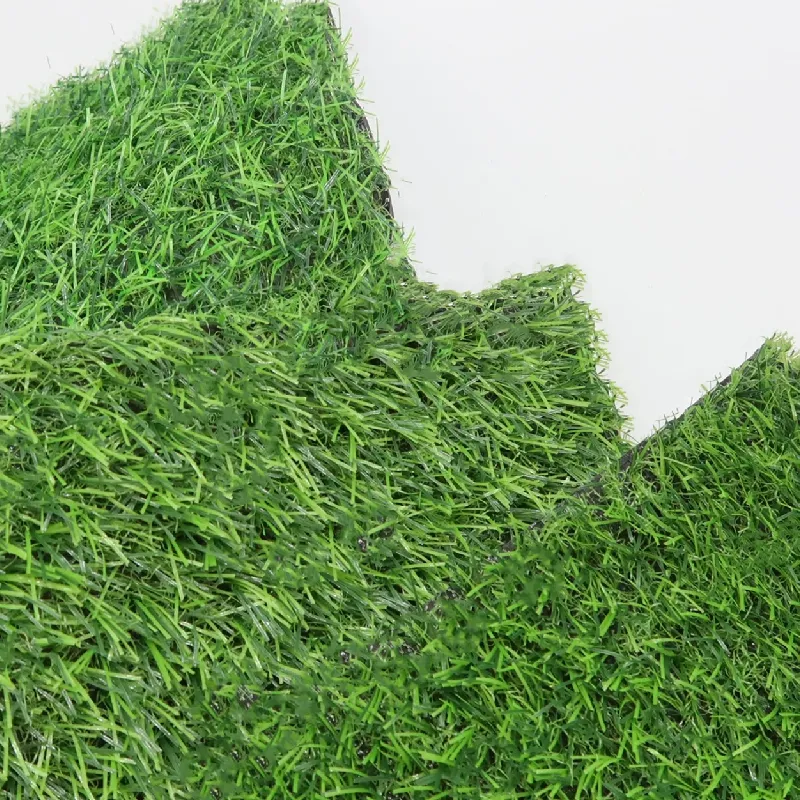
- Afrikaans
- Arabic
- Belarusian
- Bengali
- Czech
- Danish
- Dutch
- English
- Esperanto
- Estonian
- Finnish
- French
- German
- Greek
- Hindi
- Hungarian
- Icelandic
- Indonesian
- irish
- Italian
- Japanese
- kazakh
- Rwandese
- Korean
- Kyrgyz
- Lao
- Latin
- Latvian
- Malay
- Mongolian
- Myanmar
- Norwegian
- Persian
- Polish
- Portuguese
- Romanian
- Russian
- Serbian
- Spanish
- Swedish
- Tagalog
- Tajik
- Thai
- Turkish
- Turkmen
- Ukrainian
- Urdu
- Uighur
- Uzbek
- Vietnamese
laying synthetic turf
Dec . 04, 2024 09:26 Back to list
Laying Synthetic Turf A Comprehensive Guide
As the demand for low-maintenance landscaping solutions grows, synthetic turf has become an increasingly popular choice for both residential and commercial properties. Its durability, aesthetic appeal, and environmental benefits make it an attractive alternative to natural grass. Laying synthetic turf, however, requires careful planning and execution to ensure a successful installation. In this guide, we'll explore the essential steps involved in laying synthetic turf and provide tips for achieving the best results.
Understanding Synthetic Turf
Synthetic turf, often made from plastic polymers like polyethylene, polypropylene, or nylon, mimics the natural appearance and feel of grass. It comes in a variety of colors, textures, and densities, allowing homeowners and landscapers to choose the perfect match for their needs. The benefits of synthetic turf include reduced water usage, minimal maintenance requirements, and increased durability against wear and tear.
Preparing the Area
Before laying synthetic turf, proper preparation of the area is crucial. Start by selecting the right location. Ideally, the space should receive plenty of sunlight and be free from debris or overhanging branches. Once you've chosen your site, follow these steps
1. Clear the Area Remove any existing grass, weeds, or debris from the installation site. Using a sod cutter or shovel can make this task easier.
2. Level the Ground Ensure the area is level and free of large rocks or roots that may protrude through the turf. Use a rake to create a smooth surface.
3. Install a Base Layer A base layer of crushed rock or decomposed granite is essential for proper drainage and stability. Spread a 2-3 inch layer over the area and compact it using a plate compactor.
4. Create a Drainage System If necessary, install a drainage system to prevent water from pooling on the synthetic turf. This could involve creating a slight slope away from buildings or adding drainage pipes if the area is particularly prone to flooding.
Laying the Synthetic Turf
Once the preparation is complete, it's time to lay the synthetic turf. Follow these steps for a successful installation
1. Roll Out the Turf Unroll the synthetic turf on the prepared base, allowing it to acclimate for a few hours. This will make the turf more flexible and easier to work with.
laying synthetic turf

2. Cut to Fit Use sharp utility knives to trim the edges of the turf to fit the area perfectly. Pay attention to the direction of the grass blades; they should all face the same way for a more natural appearance.
3. Seaming the Turf If you have multiple pieces of turf, you may need to seam them together. Use seam tape and adhesive specifically designed for synthetic turf to bond the edges. Ensure the seams are tight and aligned to avoid visible gaps.
4. Secure the Turf Use landscape staples or pegs to secure the turf to the ground. Place these every 6-12 inches along the edges and throughout the field, depending on the size of the area.
Infill and Finishing Touches
After securing the turf, adding infill is the next crucial step. Infill material, such as silica sand or rubber granules, helps to support the blades, provides a cushioning effect, and aids in drainage. Follow these guidelines for applying infill
1. Spread the Infill Use a spreader to evenly distribute the infill across the surface. Aim for a depth of 1-2 inches, depending on the type of turf.
2. Brush the Turf Use a stiff-bristled broom to brush the turf, helping the infill settle into the fibers and standing the blades upright.
3. Final Inspection Examine the entire area for any irregularities or areas that need additional infill or adjustments.
Maintenance and Care
Once your synthetic turf is installed, it requires minimal maintenance. Regular brushing, rinsing off debris, and occasional infill replenishment will keep it looking great. Additionally, inspect for any tears or damage, and repair promptly to prolong the lifespan of your investment.
Conclusion
Laying synthetic turf can transform your outdoor space into a lush, green area that requires little maintenance while providing year-round beauty. By following these steps and taking the time to prepare correctly, you can enjoy all the benefits of synthetic turf and create a stunning landscape that enhances your property. With its many advantages, synthetic turf is undoubtedly a worthwhile investment for homeowners and businesses alike.
-
The Benefits of Artificial Turf for Indoors
NewsJul.15,2025
-
How Artificial Grass Suppliers Ensure Quality Products
NewsJul.15,2025
-
Artificial Grass and Pets: A Space for Relaxation
NewsJul.08,2025
-
Balcony & Outdoor Decoration with Artificial Grass
NewsJul.08,2025
-
Best Indoor Artificial Grass for Home
NewsJul.07,2025
-
Best Pet Turf for Dogs: Safe & Durable Artificial Grass Options
NewsJul.07,2025
Products categories









